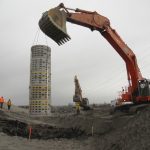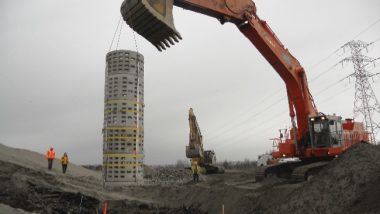A DSEAR Risk Assessment is defined as “a Risk Assessment which assesses all the risks which are risks which fall within the scope of the UK’s DSEAR”.
For those unfamiliar with DSEAR, the following extract from the UK governments HSE website defines the meaning of DSEAR:
The DSEAR Explained

The Dangerous Substances and Explosive Atmospheres Regulations 2002 (DSEAR) require employers to control the risks to safety from fire, explosions and substances corrosive to metals.
A quick guide to DSEAR DSEAR in detail Publications ATEX and DSEAR Frequently asked questions Quick guide to DSEAR What is DSEAR?
DSEAR stands for the Dangerous Substances and Explosive Atmospheres Regulations 2002.
Dangerous Substances
Dangerous substances can put peoples’ safety at risk from fire, explosion and corrosion of metal. DSEAR puts duties on employers and the self-employed to protect people from these risks to their safety in the workplace, and to members of the public who may be put at risk by work activity.
What are Dangerous Substances?
Dangerous substances are any substances used or present at work that could if not properly controlled, cause harm to people as a result of a fire or explosion or corrosion of metal. They can be found in nearly all workplaces and include such things as solvents, paints, varnishes, flammable gases, such as liquid petroleum gas (LPG), dust from machining and sanding operations, dust from foodstuffs, pressurised gases and substances corrosive to metal. via hse.gov.uk
What Does the DSEAR Require?
DSEAR requires employers to assess the risks of fires and explosions that may be caused by dangerous substances in the workplace. The aim is to protect employees and other people who may be put at risk, such as visitors to the workplace and members of the public. The Regulations complement the requirement to manage risks under the Management of Health and Safety at Work Regulations 1999 (SI 1999 No 3242).

DSEAR put into effect requirements from two European Directives: the Chemical Agents Directive (98/24/EC) and the Explosive Atmospheres Directive (99/92/EC). It also replaced a number of older regulations dealing with flammable substances safety.
Fires and explosions create harmful physical effects – thermal radiation, overpressure effects and oxygen depletion. These effects can also be caused by other energetic events such as runaway exothermic reactions involving chemicals or decomposition of unstable substances such as peroxides. These events are also covered by DSEAR. Gases under pressure can also cause explosions creating harmful effects. Substances that are corrosive to metal may cause damage to metal/metal-containing structures which could result in reduced structural integrity.
Where does DSEAR apply?
DSEAR applies to workplaces where dangerous substances are present, used, or produced.
Workplaces are any premises or parts of premises used for work. This includes places such as industrial and commercial premises, land-based and offshore installations, mines and quarries, construction sites, vehicles and vessels, etc. Places such as the common parts of shared buildings, private roads and paths on industrial estates and roadworks on public roads are also premises – as are houses and other domestic premises if people are at work there. via hse.gov.uk
What Does this Mean in Terms of Activities in the Workplace?
DSEAR are goal-setting regulations and are supported by an Approved Codes of Practice (ACOP) that provides practical advice on how to comply with them.

They set minimum requirements for the protection of workers from fire and explosion risks related to dangerous substances and potentially explosive atmospheres and from gases under pressure and substances corrosive to metals and require employers to control the risks to the safety of employees and others from these hazards.
Explosive atmospheres in the workplace can be caused by flammable gases, mists or vapours or by combustible dust. Explosions can cause loss of life and serious injuries as well as significant damage.
More Examples of Activities which Require a DSEAR
Storing and Dispensing Petrol at a Workplace
Petrol is a dangerous substance and is a highly flammable liquid which can give off flammable vapour, even at very low temperatures. This means there is always a risk of fire and explosion when a source of ignition is present and when ignited it can quickly cause fire, injury and loss of life. Storing and dispensing petrol at a workplace is covered by the Dangerous Substances and Explosive Atmospheres Regulations 2002 (DSEAR), and other legislation specifically for controlling petrol storage and the suitable containers for storing petrol in.
In the case of handling petrol, it would generally be accepted that a risk exists, requiring a DSEAR risk assessment.
In the following examples, the responsible person within the organisation (generally a business) will need to decide on the extent to which an identifiable increased hazard is present, before instigating a DSEAR risk assessment.
DSEAR Risk Assessment for General Fire Safety on Construction Sites, Nuclear Premises and on Ships Under Construction or Repair
There are thousands of recorded fires in commercial premises every year. HSE’s main responsibility in this area is for the special precautions within a work process which are designed to prevent or reduce the likelihood of a fire breaking out or (should a fire break out) reduce its intensity. HSE also has enforcement responsibility for process fire safety on construction sites, for nuclear premises and on ships under construction or repair.
Gases Under Pressure
Gases that are under pressure (eg gas in a cylinder) may present a risk of explosion if not correctly handled in the workplace. Substances that can corrode metals could cause structural damage reducing the integrity of structures if not suitably contained. Therefore, assuming businesses are already complying with these duties, they are unlikely to need to take any additional action.
Questions Raised by the Above DSEAR Information
Businesses are continually posing the question to us of “what exactly are the dangerous substances we should consider?”, and “does our business really need to undertake a DSEAR assessment?”.

The HSE site supplies us all with a beginning point for any service to assist in determining the information what all organisations require to understand. The HSE recognizes that hazardous compounds are any compounds utilized or present at work that could, if not appropriately managed, trigger damage to individuals as an outcome of a fire or explosion.
In useful terms, they can be discovered in almost all offices and consist of such things as solvents, combustible paints, varnishes, combustible gases (such as LPG and Acetylene), and dust that can be produced as a spin-off.
Actions to Asses whether a Full DSEAR Risk Assessment is Warranted for Any Business
For more information visit our DSEAR Risk Assessment Service page and the need to:
a) Identify all substances, and processes in your workplace have the potential to present a fire and explosion risk.
b) Consider what could go wrong, and what would happen if something was to go wrong and to have in place emergency planning.
c) Ensure that maintenance (which may or may not fall under the DSEAR) and cleaning operations have been fully factored into the above risk-set.
e) Consider what controls would be needed for these activities. For example, are Permits to Work required?
f) What codes of practice are already available and officially recognised in your industry which can form the basis for risk limitation and for compiling suitable Permits to Work.
If during a first pass by management with your safety officer, a significant risk is deemed present, a DSEAR risk assessment with all the formal requirements that entails must be embarked upon.
While doing this in-house can be done, and holds merits from the fact that the in-depth thought process involved can be truly beneficial to the organisation, risks can often be missed. These are risks which an experienced DSEAR Risk Assessor will find. This is a matter of experience and the expert route is frequently more cost-effective for the business.
Common DSEAR Misconceptions:
DSEAR Compliance is Covered by COSHH
External consultants/ advisers on health and safety matters advise that organisations need to be aware that DSEAR is not covered by COSHH compliance.
DSEAR Compliance is Covered by REACH
Organisations have adopted a variety of workplace practices and consider that they are complying with the regulations.
However, difficulty understanding what to do in practice has resulted in managers misinterpreting some of the requirements.
For example, considering that separate risk assessments are required for different hazardous substances and some respondents noted that one driver for this may be the overlap between COSHH and other legislation on hazardous substances, such as REACH.
DSEAR Compliance is Covered by Completing a Fire Risk Assessment
DSEAR risk assessments differ from fire risk assessments, how to define hazardous zones and how to store flammable gases. via hse.gov.uk
Who Is Responsible for the DSEAR Risk Assessment?
You may well ask “Who Is Responsible for the DSEAR Risk Assessment?” The person who Is responsible for carrying out the DSEAR Risk Assessment for any workplace is a good question. One which may arise when a number of contractors, and sub-contractors operate on a site, where an explosion hazard is present which requires the […]
Landfill Site DSEAR Risk Assessment and ATEX Directive Compliance
The following is an explanation of the requirements of the DSEA Regulations for Landfill Site DSEAR Risk Assessment, and what they mean for landfill site owners and operators. All landfill owners (and by delegation their operators) fall under this regulation, and must act in order to comply with Dangerous Substances and Explosive Atmospheres Regulations (DSEAR) which have […]
DSEAR Meaning? What is the Meaning of DSEAR? What are the DSEAR Regs?
The DSEAR meaning is very specific, and is easily defined. DSEAR (The Dangerous Substances and Explosive Atmospheres Regulations of 2002) is the United Kingdom’s implementation of the European Union-wide ATEX directive. The intention of the Regulation is to reduce the risk of a fatality or serious injury resulting from a “dangerous substance” igniting and potentially […]




